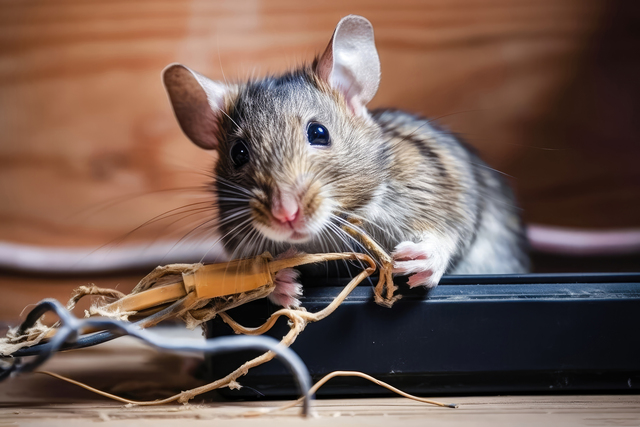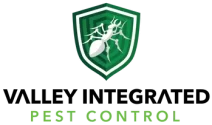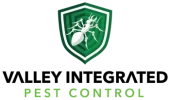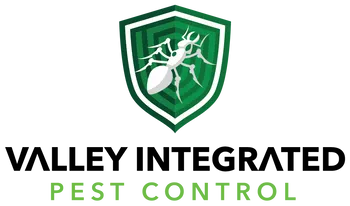For homeowners in Fresno, CA, the question “Are rodents a problem in Fresno?” is often answered with a frustrating “yes.” But the real challenge isn’t just their presence; it’s understanding that you’re not fighting a single enemy. The concept of one “common rodent” is a myth. Instead, property owners are engaged in a two-front war against distinct groups of pests: the ‘Structural Invaders’ that compromise your home from within, and the ‘Landscape Destroyers’ that decimate your yard from the outside.
Winning this war requires more than a few scattered traps. It demands a strategic battle plan based on correct identification, targeted tactics, and an understanding of how each enemy operates. This comprehensive Fresno rodent identification guide will equip you with the expert knowledge needed to defend both fronts, protect your property, and reclaim your peace of mind.

Front #1: The Structural Invaders Compromising Your Fresno Home
Structural Invaders are the pests that breach your home’s defenses, turning your attic, walls, and kitchen into their personal sanctuary. These rodents pose the most direct threats to your family’s health and your home’s integrity, causing damage to wiring, insulation, and stored food. If you’re hearing strange noises in the attic at night in your Fresno home, you’re likely dealing with one of these intruders.
Roof Rats (Rattus rattus): The Aerial Assault
As their name suggests, Roof Rats are exceptional climbers. In Fresno and Clovis, CA, they use overhanging tree branches, utility lines, and even rough stucco walls as highways to access your roof. Wondering why you have rats in your palm trees? Those dense fronds provide perfect shelter and a launchpad to your attic vents and eaves. Once inside, they create nests in attics and wall voids, posing a serious fire hazard by gnawing on electrical wiring. Finding a rat nest in your home is a clear sign of a significant roof rat infestation.
- Identification: Slender body with a pointed nose. Their tail is consistently longer than their head and body combined. Their droppings are spindle-shaped with pointed ends.
- Primary Threats: Chewing through electrical wires and PEX plumbing, shredding insulation for nesting material, contaminating food supplies, and spreading diseases.
- What They Eat: Roof rats are omnivores with a preference for fruits, nuts, and seeds, making Fresno’s abundant fruit trees a major attraction.
Norway Rats (Rattus norvegicus): The Ground Offensive
Larger and more robust than their climbing cousins, Norway rats are masters of the ground game. These burrowing rodents thrive in the Central Valley, often found in basements, crawl spaces, and sewer systems. They gain entry to homes at or below ground level, exploiting cracks in the foundation or gnawing through weaker materials. Their powerful jaws can chew through plastic, wood, and even low-quality concrete.
- Identification: Thick, heavy body with a blunt nose. Their tail is shorter than their head and body. Their droppings are capsule-shaped with blunt ends.
- Primary Threats: Undermining building foundations with burrows, damaging sewer lines, contaminating stored goods, and carrying serious pathogens. Norway rat control in the Central Valley is a major concern for both residential and agricultural properties.
House Mice & Deer Mice (Mus musculus & Peromyscus maniculatus): The Stealth Infiltrators
Related: How do you know if you have rats or mice?
Don’t underestimate these small but mighty invaders. A house mouse can squeeze through an opening the size of a dime, making them incredibly difficult to exclude. They are prolific breeders, meaning a couple of mice can quickly lead to a full-blown infestation. It’s crucial for Fresno residents to know the difference between house mice vs deer mice. While both contaminate food, deer mice (identifiable by their white bellies and feet) are the primary carriers of the potentially fatal Hantavirus in California.
- Identification: Small bodies, large ears, and long, thin tails. Deer mice have distinctly bi-colored tails and white undersides.
- Primary Threats: Contaminating food surfaces with urine and feces, spreading diseases like salmonella, and triggering allergies. Obvious signs of mice in the kitchen include gnawed packages and small, rod-shaped droppings.
- What Attracts Mice to a House: Crumbs, unsecured pet food, and warmth are powerful magnets for these pests, especially during the colder winter months.
Front #2: The Landscape Destroyers Ruining Your Yard and Garden
While you’re focused on the threat inside, another battle is often raging right outside your door. Landscape Destroyers attack your property from the outside-in, ruining lawns, gardens, and expensive landscaping that are common in homes across Fresno County.
Pocket Gophers (Thomomys bottae): The Subterranean Saboteurs
If you see large, fan-shaped mounds of fresh soil erupting on your lawn, you’re looking at the classic signs of gophers in your yard in Fresno. These powerful burrowing rodents live almost their entire lives underground, creating extensive tunnel systems. They feed on the root systems of plants, often killing trees, shrubs, and garden vegetables from below without any visible surface damage until it’s too late.
- Identification: Rarely seen above ground, their presence is confirmed by their crescent-shaped mounds with a plugged hole off to one side.
- Primary Threats: Severe vole damage in California gardens is often misattributed when gophers are the real culprit, destroying root systems, damaging sprinkler lines, and creating tripping hazards. Effective gopher control in Fresno County is essential for maintaining a healthy landscape.
Voles (Microtus spp.): The Surface-Level Scourge
Often mistaken for mice, voles (or meadow mice) are a common answer to “what rodent looks like a rat but isn’t?” They have stouter bodies, shorter tails, and small, less prominent ears. Instead of burrowing deep, voles create a network of 1-2 inch wide “runways” on the surface of the lawn, often hidden under mulch or snow cover. They feed on grass, plant stems, and bulbs, and can girdle and kill young trees by chewing the bark around the base.
- Identification: Look for the tell-tale surface runways and gnaw marks at the base of shrubs and trees.
- Primary Threats: Widespread lawn damage, destruction of flower bulbs and garden plants, and killing young ornamental trees.
Squirrels, Pack Rats, and Other Native Rodents
Fresno’s diverse ecosystem includes other rodents that can cause problems. Tree squirrels can become structural pests if they decide to nest in your attic. The native pack rat (or woodrat) is known for collecting shiny objects and creating large, messy nests in sheds, woodpiles, or crawl spaces. California is home to a vast number of rodent species. In fact, there are 227 mammal species listed in California, including a wide variety of rodents, indicating a complex ecosystem rather than a single dominant pest.
This includes unique local species. The Fresno kangaroo rat (Dipodomys nitratoides) is endemic to areas within and near the San Joaquin Valley of California. While these fascinating jumpers are federally protected and not a typical pest, their presence highlights the region’s rich biodiversity. Their relatives in the family Heteromyidae live in complex burrows within the deserts and grasslands of western North America. The habitat for these creatures, like the Giant Kangaroo Rat, spans the western edge of the San Joaquin Valley from Fresno County to Kern County. Unfortunately, the transition of land for agriculture and urban use has critically reduced the habitat for subspecies like the Fresno kangaroo rat, which was once abundant across the valley floor.
Why a One-Size-Fits-All Approach Fails
Understanding the two-front war is critical because a strategy for one front is useless against the other. Trimming tree branches away from your roof—an excellent tactic for preventing roof rats—will do absolutely nothing to stop a gopher from destroying your lawn. Setting gopher traps in the yard won’t catch the house mouse that’s contaminating your pantry.
Effective rodent control in Fresno demands a targeted diagnosis. Identifying rodent damage to property correctly is the first step. Is it the chewed wiring of a rat or the girdled bark from a vole? Is it a gopher mound or a squirrel’s digging? Answering these questions determines the entire course of action and is why DIY rodent prevention tips often fall short. A successful defense requires integrated pest management for rodents, a holistic approach that matches the solution to the specific pest and situation.
Tailored Battle Plans for Each Front
Once you’ve identified your enemy, you can deploy the right tactics. Here are specific, actionable strategies for each front, moving beyond generic advice to offer real solutions.
Strategy for Structural Invaders (Rats & Mice)
- Exclusion is Key: This is the most critical long-term rodent control solution. A professional will conduct a thorough inspection, sealing rodent entry points around your home. This includes gaps around pipes, attic vents, crawl space doors, and weather stripping. Our Fresno rodent exclusion services provide a permanent barrier against re-infestation.
- Sanitation and Elimination: Make your home inhospitable. Store all food (including pet food) in airtight containers. Clean up spills and crumbs immediately. Fix leaky faucets to remove water sources. After an infestation, it’s vital to learn how to clean up after a rodent infestation safely, using protective gear to avoid contact with hazardous materials.
- Trapping and Removal: Trapping is necessary to eliminate the current population inside your home. The best way to trap a rat in the house depends on the species and location. Professional rodent removal in Fresno ensures traps are placed strategically and handled safely. For large infestations, calling an emergency rat exterminator might be necessary.
Strategy for Landscape Destroyers (Gophers, Voles, etc.)
- Targeted Trapping: Gopher control relies on placing specialized traps directly inside their main tunnels. Vole trapping is done on the surface along their runways. This requires knowledge of their behavior for effective placement.
- Exclusion and Barriers: For gardens, installing underground fencing or hardware cloth can protect plant roots from gophers. Tree guards can be placed around the base of young trees to prevent girdling by voles.
- Habitat Modification: Reduce the appeal of your landscape. Keep your lawn mowed and remove dense ground cover, mulch, and debris where voles love to hide and build their nests. For squirrels, consider squirrel-proof bird feeders and secure trash can lids.
When to Call for Reinforcements: Professional Rodent Control in Fresno, CA
Fighting a two-front war against rodents is a complex and often overwhelming task. The health risks from rodent infestations are significant, and ineffective DIY methods can allow populations to explode. If you’re seeing persistent signs of activity, it’s time to call in professional rodent control specialists in Fresno, CA.
A reputable local rodent control company will provide a comprehensive inspection to identify every pest and all entry points. We develop a customized plan that addresses both the structural and landscape fronts, utilizing professional-grade tools and pet-safe rodent control solutions. Whether you need residential rodent control services or have issues at a commercial property, our team has the expertise to secure your property. Don’t wait for the problem to worsen. Contact us for a consultation and let us help you win the war on rodents.
Frequently Asked Questions about Fresno Rodents
Are there rats in Fresno?
Absolutely. Fresno and the surrounding Central Valley are home to significant populations of both Roof Rats, known for climbing and infesting attics, and Norway Rats, which are larger and tend to burrow and infest lower levels of structures.
What are the small rodents in California?
California has a huge diversity of small rodents. Besides the common House Mouse and Deer Mouse, you’ll find voles (meadow mice), multiple species of squirrels, pack rats (woodrats), and even protected native species like the Fresno kangaroo rat.
How do I identify a rodent in my yard?
Look for key signs. Fresh, crescent-shaped mounds of dirt are the calling card of a pocket gopher. A network of narrow, trampled-down paths in your grass indicates voles. Digging around the base of trees or plants could be squirrels. Identifying rodent droppings can also help a professional pinpoint the culprit.
What rodent looks like a rat but isn’t?
Several animals can be mistaken for rats. The pack rat (woodrat) has a furrier tail and larger ears. Voles look like stout mice with very short tails. In some cases, a young opossum might even be mistaken for a very large rat at a glance.






